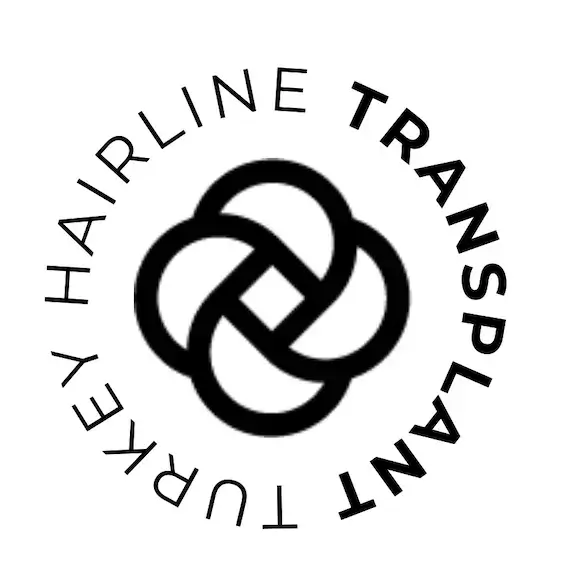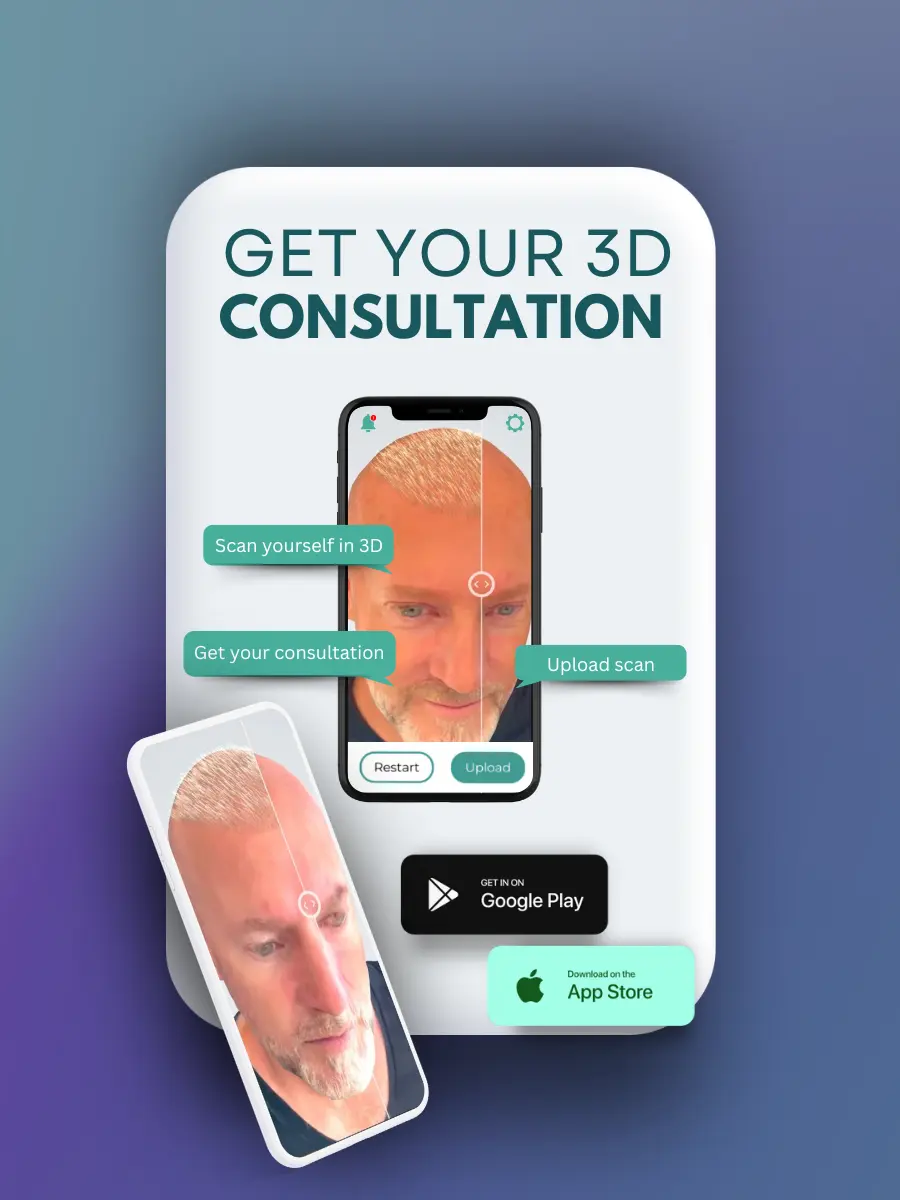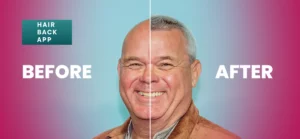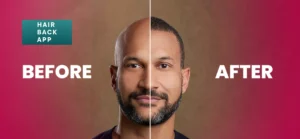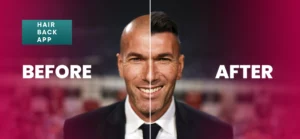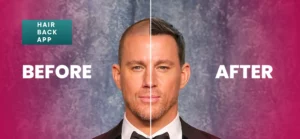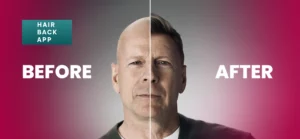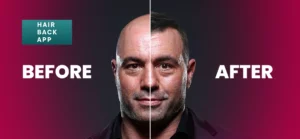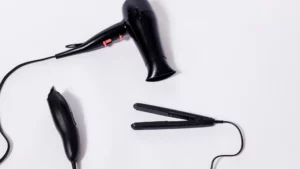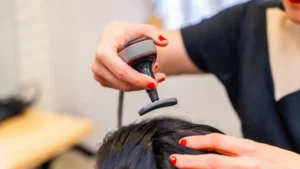Can you use minoxidil after hair transplant? When can you stop using minoxidil after hair transplant? These are important questions to ask. Especially when researching what to expect after FUE hair transplant.
My name is Emma Wright, your resident hair restoration specialist. Today, I’ll be answering your questions about minoxidil use after hair transplant. So, what is minoxidil and why is it important?
Minoxidil is an FDA-approved topical solution that has revolutionized the treatment of hair loss. Originally developed as an oral medication for hypertension, its unexpected side effect of promoting hair growth led to its formulation as a topical treatment for androgenetic alopecia, commonly known as male or female pattern baldness.
After undergoing a hair transplant, whether it’s a Follicular Unit Extraction (FUE) or another technique, the scalp is in a delicate state. Minoxidil steps in as a crucial component of post-operative care, aiding in the healing process and nurturing newly transplanted follicles to ensure optimal growth.
But the question remains: can you use minoxidil after a hair transplant, and for how long? These inquiries are pivotal for anyone considering or undergoing a hair restoration procedure. Understanding the role and duration of minoxidil use is fundamental in setting realistic expectations and achieving long-term success.
Let’s find out!
What is Minoxidil?
Minoxidil is a medication primarily used to treat hair loss. Originally developed as a vasodilator to treat high blood pressure, its unexpected side effect of promoting hair growth led to its formulation as a topical solution for androgenetic alopecia, also known as male or female pattern baldness.
When applied to the scalp, minoxidil works by widening blood vessels and increasing blood flow to the hair follicles. This improved circulation can stimulate hair follicles to grow thicker, longer hair and can also prolong the growth phase of the hair cycle.
Minoxidil is available over-the-counter in various concentrations, typically ranging from 2% to 5%. It’s commonly found in solutions or foams that are applied directly to the scalp twice daily. While it’s most commonly used to treat genetic/hereditary hair loss, it can also be effective in other types of hair loss conditions, such as one-sided hair loss, traction alopecia, scarring alopecia, or alopecia areata.
Although minoxidil can promote hair growth, it’s important to note that it may not work for everyone, and results can vary from person to person. Additionally, continued use is usually necessary to maintain any hair growth achieved with minoxidil. As with any medication, it’s essential to follow the instructions provided by a healthcare professional or the product label when using minoxidil.
Can Minoxidil Really Grow Hair?
Yes, minoxidil has been shown to effectively grow hair in many individuals experiencing hair loss, particularly in cases of androgenetic alopecia, commonly known as male or female pattern baldness.
Clinical studies have demonstrated that minoxidil can promote hair growth in both men and women with this type of hair loss. It works by widening blood vessels and increasing blood flow to the hair follicles, which can stimulate hair follicles to grow thicker, longer hair and prolong the growth phase of the hair cycle.
However, it’s important to note that the effectiveness of minoxidil can vary from person to person, and results may not be seen for several months after starting hair loss treatment. Additionally, continued use of minoxidil is typically necessary to maintain any hair growth achieved.
While minoxidil is a widely used and FDA-approved treatment for hair loss, it may not work for everyone, and individual results can vary. It’s always best to consult with a healthcare professional before starting any new treatment for hair loss to determine the most appropriate course of action based on your specific situation.
What Is The Disadvantage Of Minoxidil?
While minoxidil can be effective in promoting hair growth for many people, it also has some potential disadvantages and side effects to consider:
- Skin Irritation: Some individuals may experience irritation or itching of the scalp, redness, or dryness at the site of application. This can be particularly problematic for those with sensitive skin.
- Unwanted Hair Growth: Minoxidil can sometimes lead to the growth of unwanted facial or body hair, especially in women. This side effect is more common with higher concentrations of minoxidil.
- Initial Shedding: In the first few weeks of using minoxidil, some users may experience increased shedding of hair. This can be alarming but is often temporary and can precede the growth of new, thicker hair.
- Systemic Effects: While minoxidil is primarily applied topically to the scalp, some of it may be absorbed into the bloodstream. This can potentially lead to systemic side effects such as low blood pressure, rapid heartbeat, or fluid retention. However, these side effects are rare when minoxidil is used as directed.
- Dependency: Minoxidil typically needs to be used continuously to maintain any hair growth achieved. If use is discontinued, any new hair growth may be lost within a few months.
- Limited Effectiveness: While minoxidil can be effective for many people, it may not work for everyone. Its effectiveness can vary depending on factors such as the underlying cause of hair loss and individual response to the medication.
- Cost and Convenience: Minoxidil can be expensive, especially if used long-term, requiring consistent application to see results.
Who Should Not Use Minoxidil?
While minoxidil is generally safe for most people, there are certain individuals who should avoid or use minoxidil with caution.
Here are some groups who may not be suitable candidates for minoxidil use:
- Pregnant or Breastfeeding Women: The safety of minoxidil during pregnancy and breastfeeding has not been established. Pregnant or breastfeeding women should consult with a healthcare professional before using minoxidil.
- Individuals with Hypersensitivity: Some people may be allergic or hypersensitive to minoxidil or any of the ingredients in minoxidil products. It’s important to perform a patch test before using minoxidil to check for any adverse reactions.
- Those with Scalp Infections or Irritations: Individuals with scalp infections, cuts, or irritations should avoid using minoxidil until the scalp has fully healed. Applying minoxidil to broken or damaged skin can worsen irritation or cause further complications.
- People with Certain Medical Conditions: Individuals with certain medical conditions, such as cardiovascular diseases or dermatological disorders, should use minoxidil with caution and under the guidance of a healthcare professional. Minoxidil can potentially worsen certain conditions or interact with other medications.
- Children: Minoxidil is not recommended for use in children under 18 years old, as its safety and effectiveness in this age group have not been established.
- Individuals with Low Blood Pressure: Minoxidil is a vasodilator, meaning it widens blood vessels and can lower blood pressure. Individuals with low blood pressure or those taking medications to lower blood pressure should use minoxidil with caution and under medical supervision.

How Fast Does Hair Grow With Minoxidil?
The rate at which hair grows with minoxidil can vary from person to person. In general, it may take several months of consistent use before noticeable results are seen. Here’s what to expect in terms of hair growth timeline with minoxidil:
- Initial Shedding: In the first few weeks of using minoxidil, some users may experience increased shedding of hair. This shedding is often temporary and is known as “shedding phase” or “shedding period.” It occurs because minoxidil can disrupt the hair follicles’ natural growth cycle, causing weaker hairs to fall out to make way for new, healthier ones.
- Stabilization Period: After the initial shedding phase, hair growth typically begins to stabilize. New hair growth may start to appear, and existing hairs may become thicker and stronger.
- Visible Results: Significant hair growth results may become visible after several months of consistent use, usually around 4 to 6 months. However, individual response to minoxidil can vary, and some people may see results sooner or later than others.
- Continued Improvement: Continued use of minoxidil is typically necessary to maintain and continue improving hair growth results. Consistency is key, as stopping minoxidil treatment can lead to a reversal of any gains achieved.
It’s important to note that while minoxidil can promote hair growth, it may not work for everyone, and individual results can vary. Additionally, the effectiveness of minoxidil may depend on factors such as the underlying cause of hair loss and the individual’s response to the medication.
Additionally, it’s always best to consult with a healthcare professional for personalized advice and guidance on using minoxidil for hair growth.
When Can I Use Minoxidil After Hair Transplant
The timing for when you can start using minoxidil after a hair transplant can vary depending on the specific instructions provided by your hair transplant surgeon.
However, here are some general guidelines:
- Healing Process: It’s essential to wait until the scalp has fully healed before starting minoxidil use. This typically involves waiting for any scabs or crusts to fall off and for any redness or swelling to subside. Your surgeon will provide guidance on when it’s safe to start applying minoxidil.
- Hair Transplant After-Care Plan: Your surgeon may have specific recommendations for post-operative care, including when to start using minoxidil. They may advise waiting a certain period after the transplant surgery before introducing minoxidil to allow the scalp to heal properly.
- Follow-Up Appointment: Your surgeon will schedule follow-up appointments to monitor your progress and ensure that the transplant site is healing well. During these appointments, you can discuss the timing for starting minoxidil and any other post-transplant care recommendations.
- Gradual Introduction: When you’re ready to start using minoxidil, it’s typically recommended to introduce it gradually. This may involve applying it to a small area of the scalp initially and then gradually increasing the application area over time.
- Consistency: Once you start using minoxidil, it’s important to use it consistently as directed by your surgeon or the product label. Consistent use is key to maximizing its effectiveness in promoting hair growth and maintaining the results of the transplant.
When To Stop Minoxidil After Hair Transplant
Deciding when to stop using minoxidil after a hair transplant can vary depending on individual factors and the specific recommendations of your hair transplant surgeon.
Here are some general considerations:
- Long-Term Maintenance: Minoxidil is often used as a long-term maintenance treatment to help preserve the results of the hair transplant and prevent further hair loss. Many individuals continue using minoxidil indefinitely to maintain the benefits of the transplant.
- Response to Treatment: The decision to stop minoxidil may depend on how well you respond to the treatment. If you experience significant hair growth and are satisfied with the results, your surgeon may discuss the option of tapering off or discontinuing minoxidil use.
- Consultation with Surgeon: It’s essential to have regular follow-up appointments with your surgeon to monitor your progress and discuss any changes in your treatment plan. Your surgeon can assess your response to minoxidil and provide guidance on when it may be appropriate to consider stopping the treatment.
- Gradual Reduction: If you and your surgeon decide to stop minoxidil, it’s often recommended to gradually reduce the frequency of application rather than stopping abruptly. This can help minimize the risk of any potential rebound effects or loss of hair growth.
- Risk of Hair Loss: It’s important to be aware that stopping minoxidil treatment may lead to a gradual loss of any hair growth achieved with the medication. This is why many individuals choose to continue using minoxidil long-term to maintain their results.
What Will Happen If I Don’t Use Minoxidil After Hair Transplant
If you choose not to use minoxidil after a hair transplant, several potential outcomes may occur:
- Decreased Hair Growth: Minoxidil is known to promote hair growth and can help enhance the results of a hair transplant by stimulating the growth of transplanted and existing hairs. Without minoxidil, you may experience slower or less robust hair growth following the transplant procedure.
- Increased Hair Loss: Minoxidil is also effective in preventing further hair loss by prolonging the growth phase of hair follicles and preventing them from entering the resting phase prematurely. Without minoxidil, you may continue to experience progressive hair loss over time.
- Reduced Transplant Success: The success of a hair transplant relies on various factors, including post-operative care and maintenance. Minoxidil is often recommended as part of a comprehensive post-transplant care plan to optimize the growth and survival of transplanted follicles. Without minoxidil, the overall success and longevity of the transplant results may be compromised.
- Thinning of Surrounding Hair: Hair loss can be progressive, and without intervention, surrounding hairs may continue to thin over time. Minoxidil can help preserve the density and thickness of existing hair by promoting blood flow to the scalp and nourishing hair follicles.
- Potential for Future Treatments: If you choose not to use minoxidil after a hair transplant and experience unsatisfactory results or continued hair loss, you may explore other treatment options in the future. However, it’s essential to discuss any concerns or preferences with your hair transplant surgeon to determine the most suitable course of action.
Where To Apply Minoxidil After Hair Transplant
After a hair transplant, the application of minoxidil should be done carefully to ensure optimal results and to avoid any potential complications. Here’s a guide on where to apply minoxidil after a hair transplant:
- Recipient Area: The recipient area refers to the part of the scalp where the hair transplant was performed. This area contains the newly transplanted hair follicles. Minoxidil can be applied directly to the recipient area to promote the growth and survival of the transplanted hairs. Be gentle when applying minoxidil to this area to avoid disturbing the grafts, especially in the early stages of healing.
- Donor Area: The donor area is the region of the scalp where hair follicles were harvested for the transplant procedure, typically from the back or sides of the scalp. While minoxidil is not necessary for the donor area’s healing, some individuals choose to apply minoxidil to this area as well to promote hair growth and improve overall scalp health.
- Surrounding Hair: Minoxidil can also be applied to the surrounding areas of the scalp where there is existing hair. This can help maintain the density and thickness of surrounding hairs and prevent further hair loss in those areas.
- Scalp: Ensure that the scalp is clean and dry before applying minoxidil. Use the dropper or spray applicator provided with the minoxidil solution to apply it directly to the scalp. Part the hair to expose the scalp and apply the minoxidil evenly across the treatment areas.
- Avoid Contact with Eyes: Be careful to avoid getting minoxidil in your eyes or on other sensitive areas of the face. If accidental contact occurs, rinse thoroughly with water.
Is Minoxidil Good After Hair Transplant
In conclusion, minoxidil can be a valuable addition to post-hair transplant care, offering several benefits in promoting hair growth and maintaining transplant results. By widening blood vessels and increasing blood flow to the scalp, minoxidil stimulates follicles, aiding in the growth of transplanted hairs and preserving existing ones.
Furthermore, its role in preventing further hair loss and prolonging the growth phase of follicles is crucial in maintaining the density and thickness of the hair over the long term. While individual responses may vary, consistent use of minoxidil following a hair transplant can contribute significantly to achieving optimal outcomes.
However, it’s essential to follow the guidance of your hair transplant surgeon regarding when and how to use minoxidil effectively. By incorporating minoxidil into your post-transplant care routine and adhering to recommended application methods, you can enhance the success of your hair transplant and enjoy long-lasting results.
